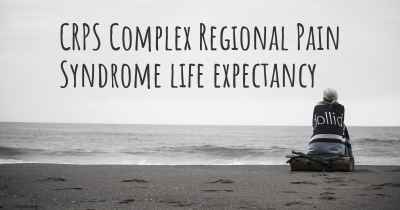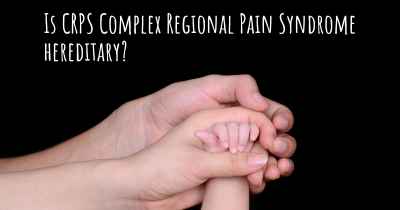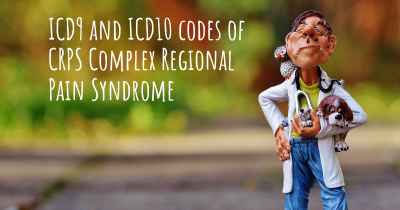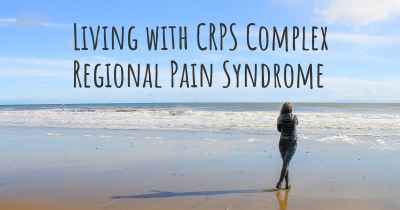How is CRPS Complex Regional Pain Syndrome diagnosed?
See how CRPS Complex Regional Pain Syndrome is diagnosed. Which specialists are essential to meet, what tests are needed and other useful information for the diagnosis of CRPS Complex Regional Pain Syndrome
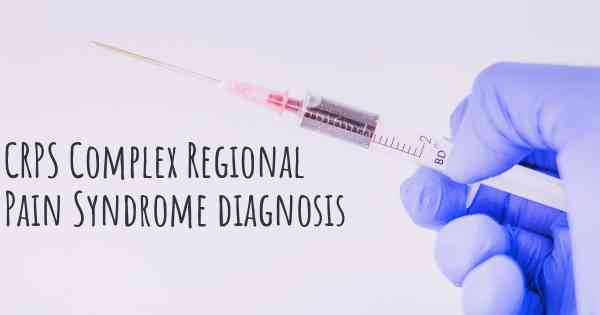
Diagnosing CRPS (Complex Regional Pain Syndrome)
Complex Regional Pain Syndrome (CRPS) is a chronic pain condition that typically affects one limb, often after an injury or trauma. It is characterized by intense and disproportionate pain, changes in skin color and temperature, swelling, and limited range of motion. Diagnosing CRPS can be challenging as there is no specific test or imaging study that can definitively confirm its presence. Instead, healthcare professionals rely on a combination of clinical evaluation, medical history, and diagnostic tests to make an accurate diagnosis.
Clinical Evaluation
The first step in diagnosing CRPS involves a thorough clinical evaluation by a healthcare professional, typically a pain specialist or neurologist. They will review the patient's medical history, including any previous injuries or trauma, and conduct a physical examination. During the examination, the healthcare professional will assess the patient's pain levels, skin color and temperature changes, swelling, and any changes in hair or nail growth. They will also evaluate the patient's range of motion and sensitivity to touch.
Key clinical features that may indicate CRPS include:
- Continuous, intense, and disproportionate pain
- Changes in skin color and temperature (e.g., redness, coolness)
- Swelling and stiffness in the affected limb
- Abnormal hair or nail growth
- Changes in skin texture (e.g., shiny, thin)
- Increased sensitivity to touch or cold
Medical History
A detailed medical history is crucial in diagnosing CRPS. The healthcare professional will ask the patient about their symptoms, the onset and progression of pain, and any previous injuries or trauma to the affected limb. They will also inquire about any underlying medical conditions, such as nerve damage, arthritis, or autoimmune disorders, as these can increase the risk of developing CRPS.
Important factors in the medical history that may contribute to a CRPS diagnosis include:
- Previous injuries or trauma to the affected limb
- Underlying medical conditions (e.g., nerve damage, arthritis)
- Surgeries or medical procedures
- Family history of CRPS or chronic pain conditions
Diagnostic Tests
While there is no specific test for CRPS, diagnostic tests may be used to support the diagnosis and rule out other conditions with similar symptoms. These tests help healthcare professionals gather objective evidence to confirm the presence of CRPS.
Common diagnostic tests for CRPS include:
- X-rays: X-rays can help identify any bone abnormalities or fractures that may be contributing to the symptoms.
- Bone scans: A bone scan involves injecting a small amount of radioactive material into the bloodstream, which is then absorbed by the bones. Areas of increased bone activity may indicate CRPS.
- Magnetic Resonance Imaging (MRI): An MRI scan can provide detailed images of the affected limb, helping to rule out other conditions and identify any soft tissue abnormalities.
- Sympathetic Nervous System Tests: These tests evaluate the function of the sympathetic nervous system, which is often affected in CRPS. They may include thermography (measuring skin temperature), sweat tests, or nerve conduction studies.
It is important to note that while these tests can provide supportive evidence, they are not definitive for diagnosing CRPS. The diagnosis is primarily based on the clinical evaluation and medical history.
Seeking a Specialist
Due to the complexity of CRPS diagnosis, it is recommended to seek the expertise of a pain specialist or neurologist who has experience in managing chronic pain conditions. These specialists are familiar with the diagnostic criteria and can provide a comprehensive evaluation to determine if CRPS is present.
Early diagnosis and intervention are crucial for managing CRPS effectively. If you suspect you may have CRPS or are experiencing persistent and severe pain after an injury or trauma, it is important to consult with a healthcare professional for an accurate diagnosis and appropriate treatment.
Posted Apr 20, 2017 by Chloe 1000
Honestly, the best test is temperature tests from one limb to the other. Anything over 1/2 °C change along with a history of other symptoms is a good indicator. For example my affected foot was 5 °C colder than my other foot. that's almost 10° F difference. Very painful.
Posted May 9, 2017 by Jon 1100
Posted May 24, 2017 by Vicki 500
Posted May 24, 2017 by Stevi 600
Posted May 28, 2017 by Amy 500
Posted Aug 17, 2017 by Chelsea 2335
Posted Sep 6, 2017 by [email protected] 5060
Posted Sep 11, 2017 by Craig 1600
Posted Sep 13, 2017 by Andy 3550
1. Continuing pain, which is disproportionate to any inciting event
2. Must report at least one symptom in three of the four following categories:
A. Sensory: reports of hyperesthesia and/or allodynia
B. Vasomotor: reports of temperature asymmetry and/or skin color changes and/or skin color asymmetry
C. Sudomotor/edema: reports of edema and/or sweating changes and/or sweating asymmetry
D. Motor/trophic: reports of decreased range of motion and/or motor dysfunction (weakness, tremor, dystonia) and/or trophic changes (hair, nail, skin)
3. Must display at least one sign at time of evaluation in two or more of the following categories:
A. Sensory: evidence of hyperalgesia (to pinprick) and/or allodynia (to light touch and/or deep somatic pressure and/or joint movement)
B. Vasomotor: evidence of temperature asymmetry and/or skin color changes and/or asymmetry
C. Sudomotor/edema: evidence of edema and/or sweating changes and/or sweating asymmetry
D. Motor/trophic: evidence of decreased range of motion and/or motor dysfunction (weakness, tremor, dystonia) and/or trophic changes (hair, nail, skin)
4. There is no other diagnosis that better explains the signs and symptoms
Posted Sep 15, 2017 by DrLisa 3750
Posted Sep 19, 2017 by Alex 2550
Posted Oct 8, 2017 by Valerie 1500
Posted Nov 11, 2017 by Robbie 2000
Posted Nov 11, 2017 by Aj 2000
Posted Nov 12, 2017 by Shanna 5000
For diagnosis the doctor needs to have a complete history of the patient and their injury as well as their symptoms.
Posted Nov 12, 2017 by ladyff1481 2050
So, see an orthopedic surgeon if you don't want to waste time. But ask to see a neurologist for an EMG to determine type 1 or 2. Mine is type 2 -- nerve damage indicated.
Posted Nov 13, 2017 by Thea 3150
Posted May 30, 2018 by Passwort123 700
Posted May 31, 2018 by Marcia 500
Posted Oct 25, 2018 by Misty 2100
Posted Nov 1, 2018 by Judy 3000
Posted Jan 5, 2019 by Cynthia 4000
Nerve blocks (injection)
Sometime blood work
All is to rule out anything else mainly
Posted Jan 16, 2021 by Patricia 3050
Posted Mar 29, 2021 by Sage0920 2000
Posted Nov 3, 2022 by Heather 5020
